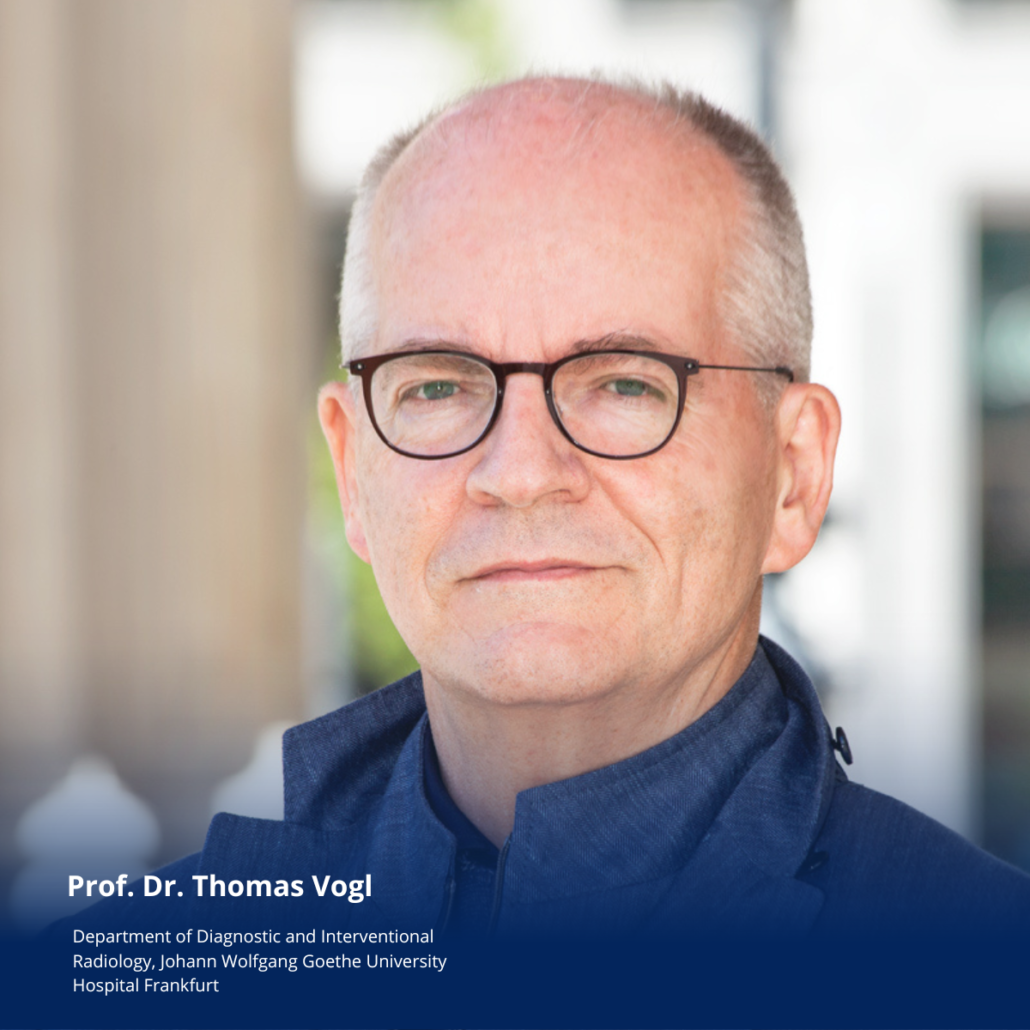Interview with Prof. Dr. Thomas Vogl, from the Department of Diagnostic and Interventional Radiology, Johann Wolfgang Goethe-University Hospital Frankfurt
The Department of Diagnostic and Interventional Radiology at Johann Wolfgang Goethe-University Hospital in Frankfurt is a leading medical facility specializing in advanced radiological diagnostics and interventional procedures. With state-of-the-art technology and a team of skilled professionals, the department plays a crucial role in providing accurate diagnoses and innovative treatments for a wide range of medical conditions. Their commitment to research, patient care, and education ensures they remain at the forefront of medical imaging and intervention, contributing to improved healthcare outcomes.
Prof. Dr. Thomas Vogl, from the Department of Diagnostic and Interventional Radiology, Johann Wolfgang Goethe-University Hospital Frankfurt, shared valuable insights during a recent discussion about the importance of safety and effectiveness in liver cancer patient care in DSM-TACE and chemoembolization. He highlighted key aspects that guide their approach to treatment:
“In our center, we always begin by analyzing the patient’s primary tumor and their treatment history. This helps us make informed decisions. We consider factors like previous treatment side effects, liver condition, tumor size, and how much healthy liver remains. It’s essential to determine whether the patient will be an inpatient or outpatient. For us, time matters greatly, we ensure that after the procedure, a patient can safely leave the hospital within six hours. Tailoring our strategy to each patient’s unique situation, we consider factors like tumor load and prior treatments, fostering collaborative discussions within our team.”
In the world of medical interventions, Prof. Vogl’s insights on DSM-TACE treatment offer a unique perspective. His words highlight the importance of individualized treatment plan:
“When it comes to DSM-TACE, our approach is all about understanding how much the patient can handle. We treat carefully to avoid aggressive treatments, especially if there’s a risk to the patient’s liver function. For these cases, DSM-TACE offer a safer route. Many patients present with multiple tumors (liver tumors), some quite large. In these instances, our goal is to stabilize the patient’s condition, creating a foundation for further interventions. There’s no one-size-fits-all approach; every patient situation is unique. In addressing this diversity, we utilize a range of techniques available in the field of interventional oncology. We also engage in open dialogues with patients, taking into account their preferences for treatment intensity and potential side effects. It is essential to align with their future treatment plans and prior medical history.”
Prof. Vogl’s insights on the impact of DSM-TACE in real-world patient cases:
“In one remarkable case, we encountered a patient with a complex condition – more than 30 liver tumors and compromised liver function. It led us to use DSM-TACE to improve liver function and reduce the tumor load. The result was astonishing; we managed to bring the number of lesions down to just four or six. Over five years later, this patient remains under good control. While such cases are rare, they inspire us to push the boundaries and strive for the best possible outcomes.”
When we asked him how education and raising awareness can contribute to better outcomes for those cases, he answered:
“Education plays a vital role in the use of DSM-TACE. It’s crucial for interventional radiologists and oncologists to understand the techniques that enable treatment in situations where, in a typical tumor board discussion, one might question whether the risk of liver failure outweighs the benefits. These lessons can also fuel further studies.”
In the evolving landscape of medical treatments, Prof. Vogl envisions a promising future for DSM-TACE:
“Patients today often arrive with complex medical histories, having undergone chemotherapy, previous surgeries, or faced recurring conditions. DSM-TACE, with its capability to downsize tumors, is emerging as a solution. In the coming days, I believe the future lies in combining DSM-TACE with immunotherapy. This dynamic pairing aims to empower the patient’s immune system to recognize and combat tumors effectively.”
Prof. Vogl emphasizes the shift towards combination approach and new treatments:
“As we explore diverse medical conditions, the trend we’re observing is the merging of treatments. Patients with liver metastases often present multiple tumor types, and they’re typically in better health, often younger. We see an unwavering determination in these patients, who yearn for every additional year of good health.”
Prof. Vogl’s parting advice to professionals venturing into this field underscores the need for comprehensive understanding and hands-on experience:
“For colleagues entering this domain, it’s vital to grasp oncology and develop a sound understanding of the liver’s intricacies. This isn’t just about injections; it’s about comprehending liver pathophysiology and hemodynamics. Active participation in courses and procedures is paramount. Building expertise is the key to gaining acceptance and respect within the medical community.”
